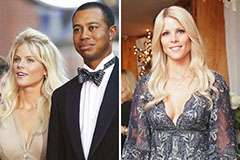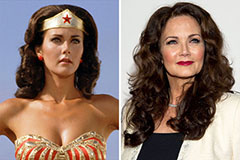Dressmaking is a captivating journey into the world of materials. It demands a blend of designful vision and meticulous attention to detail. From selecting the perfect cloth to putting together each line, dressmakers create clothes that are both practical and stylish.
The process of dressmaking is a passionate pursuit. It entails an appreciation of templates, tailoring methods, and the characteristics of various materials.
- {Ultimately, dressmaking allows individuals to express|their|their own personal style and imagination.
Fashion's Evolution Through Time
Fashion, regularly a reflection of societal norms and cultural shifts, has undergone a profound evolution throughout history. From the elaborate garments of ancient civilizations to the avant-garde designs of contemporary designers, each era has left its unique mark on the world of style. In the past, fabrics like silk and linen were extensively prized, while today's trends embrace diversity with materials ranging from recycled textiles to cutting-edge blends.
The evolution of fashion is not merely a change in appearance; it also demonstrates the beliefs of a given time. For example, the Victorian era's emphasis on propriety is evident in its restrictive gowns, while the 1960s counterculture movement embraced liberation through bold patterns.
As we move into the future, fashion will undoubtedly continue to transform with the ever-changing world around us. From responsible practices to the influence of digitalization, the next chapter in fashion's history promises to be unpredictable.
The Power of Clothes: A Psychological Perspective
What we decide upon to wear isn't merely a matter of aesthetic. It's a powerful demonstration of our inner selves, influencing how others interpret us and even shaping simply self-perception.
Clothing encompasses a fascinating breadth of psychological meaning. A vibrant look can project confidence and assertiveness, while softer tones/hues might imply softness.
- Global norms also play/have a role a significant part/role in defining our clothing preferences.
- Even the smallest details/touches, like a deliberate accessory or tone, can send volumes about who we are.
Therefore, understanding the psychology of clothing allows us to analyze the hidden communications woven into our sartorial decisions. It's a enthralling journey into the depth of human behavior and self-expression.
Cultural Expressions in Dress showcase
Clothing is more than just a necessity for covering our bodies; it is often a powerful medium of cultural expression. Through the styles of garments, colors, and accessories, individuals and societies convey their beliefs to the world. Different cultures have special traditions and norms surrounding dress, which often reflect their history, principles, and social arrangements. For instance, some cultures prioritize elaborate costumes for special occasions, while others favor more functional clothing in daily life. The study of cultural expressions in dress offers a fascinating glimpse into the diversity and richness of human culture.
Eco-Conscious Style: Ethical Selections in Fashion
In today's rapidly evolving world of fashion, consumers are increasingly seeking more sustainable options. Sustainable style isn't just a trend; it's a philosophy that prioritizes both environmental protection and social responsibility. By making conscious choices about the clothes we invest in, we can make a difference on the world.
- Selecting sustainable materials like organic cotton, recycled fabrics, and plant-based options is a crucial step.
- Supporting brands that prioritize fair treatment of workers throughout the supply chain is essential.
- Buying less but better by investing in high-quality, timeless pieces that will last longer reduces environmental impact .
Embracing sustainable style is a journey of continuous learning and adaptation. By making informed decisions, we can build a better world , one garment at a time.
Beyond the Garment: Dress as Identity
Clothing functions as more than just a covering against the elements. It is a potent tool for communication, allowing us to reveal our personalities to the world. Through delicate choices of texture and hue, we craft a visual narrative that influences how others perceive us.
From the vibrant hues of a festival outfit to the get more info traditional lines of a tailored suit, dress evolves into a mirror of our inner selves. It empowers us to explore who we are and how we intend to be perceived.
This exploration branches beyond individual expression. Dress also mirrors cultural values, transmitting messages about belonging.
 Marla Sokoloff Then & Now!
Marla Sokoloff Then & Now! Elin Nordegren Then & Now!
Elin Nordegren Then & Now! Lynda Carter Then & Now!
Lynda Carter Then & Now! Justine Bateman Then & Now!
Justine Bateman Then & Now! Christy Canyon Then & Now!
Christy Canyon Then & Now!